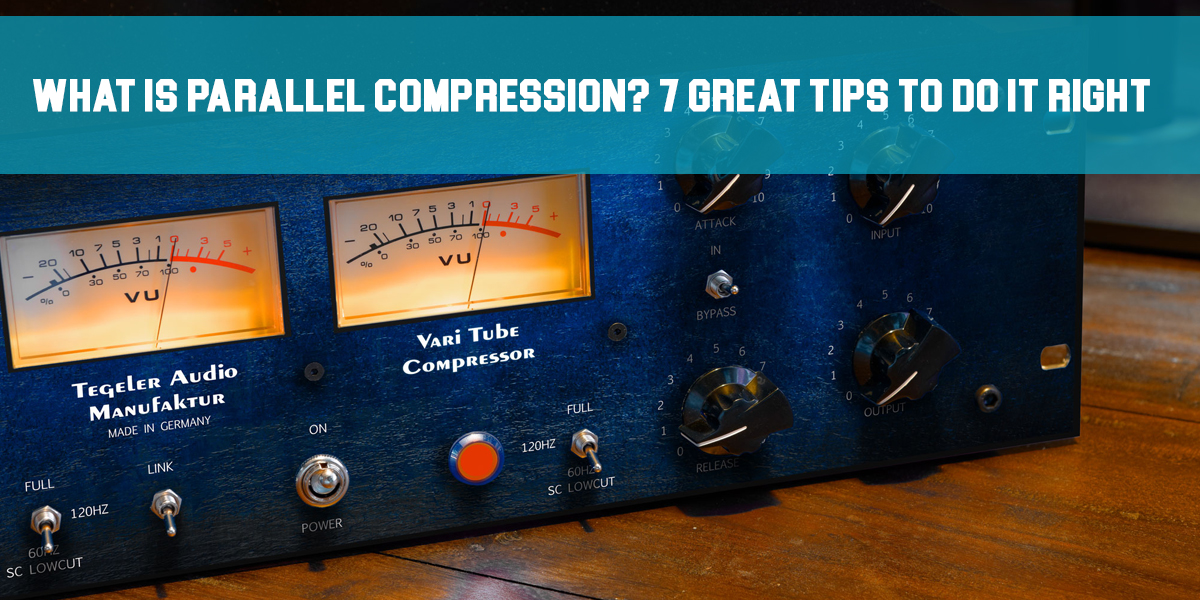Cymatics Origin Review 2021
Introduction
Who doesn’t love new and free plugins? The guys from Cymatics delivered again with one more free plugin on their roaster that will be of great help when you want to change the core sound of your track elements.
Most of the time, we will be stuck in creating the unique feel on samples or even the melodies that we recorded ourselves. Oftentimes when the boring-sounding pianos or pads need a bit of tweaking, we will combine a bunch of plugins to make that sound different. And that is not a bad approach. There you are releasing your creativity by combining tons of effects to come up with something unique that cannot be copied that easily.
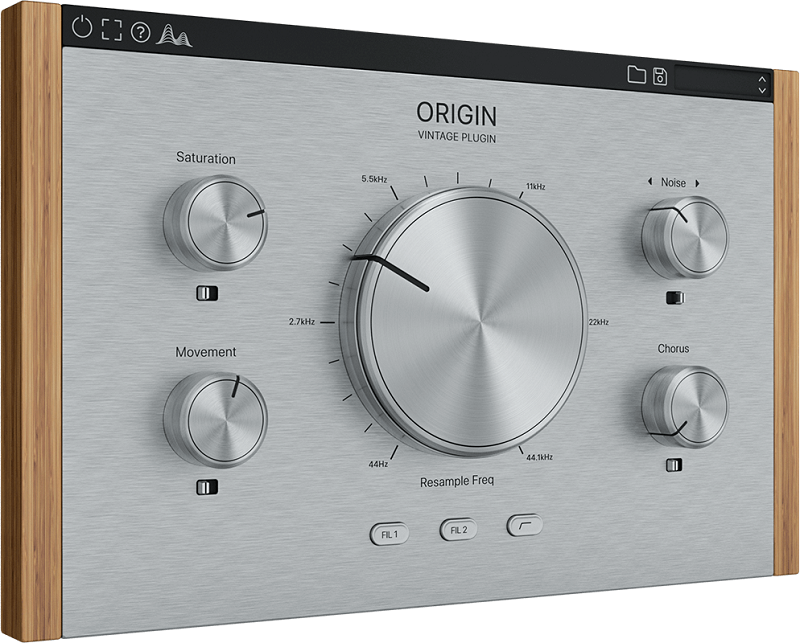
Well, now you won’t need to use tons of plugins to do that. Cymatics Origin will be able to do that for you from one panel and create something special from a signal that sounds regularly okay.
But let’s check who Cymatics is first:
Brief History
They started the whole project a while ago and they are focusing to deliver great packs on their website, selling high-quality samples and patches for Serum that are in trend with the music and the genres that are popular out there. Their success is clearly visible as they became a brand known for contributing to the music community, conducting a bunch of giveaways, and being highly competitive even with the old-school and well-known developers out there.
This makes them one of the best choices out there among the younger engineers and producers because they simply deliver goods that need a bit of tweaking and mixing as their samples are already sounding very good.
They also share very creative and informative content on their YouTube channel where you are able to see how world-class producers are using their products and what can be done with them. The tutorials found on their channel are good for both newcomers and seasoned producers and technicians.

So, let us see what this plugin does and what can be achieved with it:
Cymatics Origin Parameters
Resampler Frequency Knob
There are 5 big knobs that we first notice on the interface. The biggest one is in the middle of the processor and is the Resampler Frequency knob.
The center of Origin is the resampler, which modifies the sample rate of your operating audio in real-time. It leverages the Nyquist-Shannon sampling theorem, which states that the very best potential frequency producible within the digital area is one-half of the sampling rate. This means that it will reduce the sample rate of the audio and will cut down the high frequencies that you are hearing
Nonetheless, decreasing the sample rate alone will produce bitcrusher-style artifacts. Sometimes when we are working in the audio world, these artifacts might come good and actually improve or contribute to the sound. Eradicating these artifacts will end in an effect much like a brick-wall lowpass filter however with an altogether completely different sonic character.
Below the Resampler Frequency knob, there are some filters that you can use for this parameter. These artifacts produced by the resampling process can be cut down with the post-resampler anti-aliasing filter. The pre-resampler filter removes high frequencies at the input stage before the resampler, reducing the imaging artifacts even more.
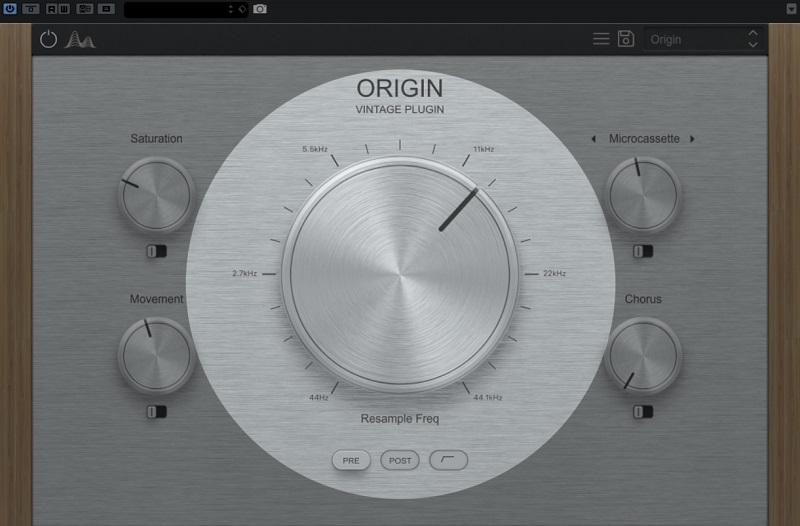
The highpass filter is fixed to cut all the frequencies below the 200Hz and remove the low-end frequencies that are not needed and that create rumble in the sound.
Aside from this main and biggest knob in the center of the interface, we have 4 more parameters that are there to add more flavor to the sound we are working on.
Saturation knob
In the top left corner, you will be able to find the Saturation knob and the name says it all. With this knob, you will be able to introduce saturation to the sound and make it sound fuller and rounder. Below the knob, you have a simple switch that you can use to switch between two types of saturation: Tube and Drive saturation features. Both with great sound and are great for many purposes.
If you increase the knob on the saturation, you will be able to re-introduce some of the frequencies you’ve lost through the resampling process. More character is always good, right?
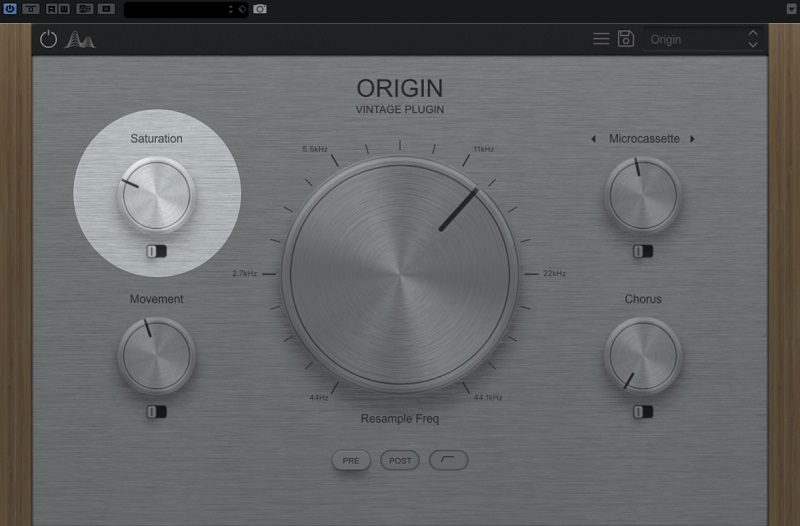
Noise knob
After that, in the top right corner, we have the next knob and that is the Noise knob. With this knob, you will be able to inject vintage noises into the sound you are working on. To summarize, you will have options to pick from a cassette sound, reel to reel, and vinyl crackles. With the knob, you are setting the level of these noises and with the switch below the knob, you are setting the noise to work pre or post resampling process. Pretty straightforward to use.

Movement knob
In the bottom left corner, you will be able to find the Movement knob. The Movement knob emulates the refined pitch waverings of an outdated tape machine. There are two distinctive motion modes accessible in Origin which vary from refined to excessive pitch modulation. The Random mode modulates the pitch of the signal in a random method, much like the effect produced by analog tape.
Rising the quantity of Random pitch modulation will intensify its effect and in addition make it go slightly quicker. The second Movement kind relies on a more traditional Wow/Flutter which was significant to reel-to-reel decks. Rising the knob under this setting will get you a bit slower WoW modulation, bringing within the quicker Flutter modulation in. The switch below the knob changes the movement from Random to fixed Wow/Flutter modulation.
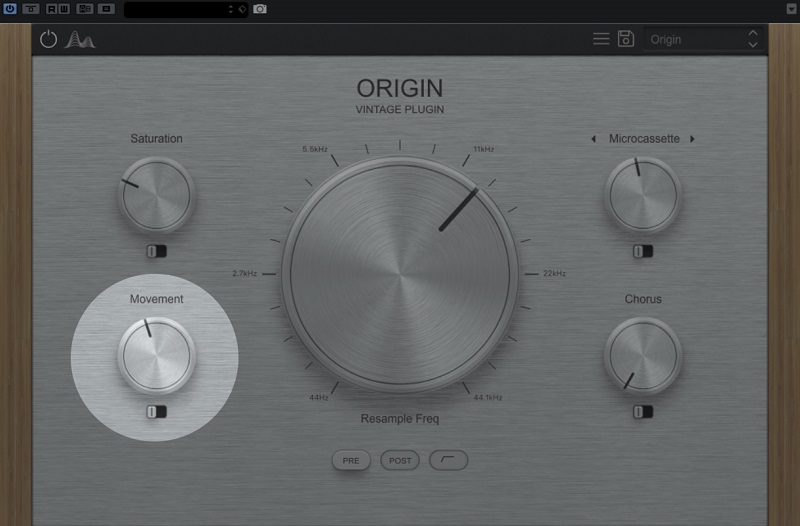
Chorus knob
The last knob that we have on this plugin is the Chorus knob and it is located in the bottom right corner. This is a classical chorus effect that can be injected into the sound through the knob we have dedicated to it. The chorus is designed in reference to the old Juno-60 synth.
The switch selects between the same two chorus rates as in the Juno-60. It will turn any dull, mono sound into a moving and interesting sound as any chorus effect can achieve.
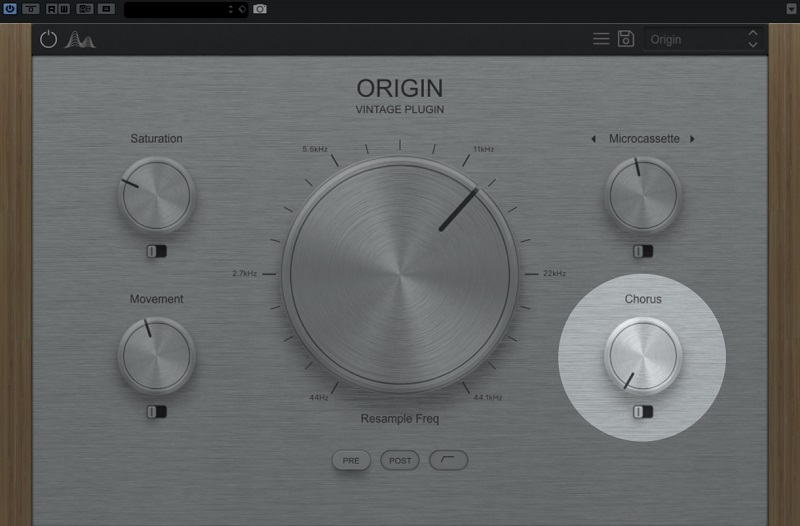
Additional options
Besides the regular parameters that we mentioned above, this plugin also has A/B button on it, or to switch it on and off to see the progress you are making with the processing. Next, you have the option to change the size of the interface; small, medium, and large. This is actually a good option where you can set the size of the plugin to your taste.
Also, this plugin provides around 40 presets that you can pick from for your signal. Presets are always good to check what this plugin can do and actually you might use some of them for your final project. Additionally to that, you will be able to save your own presets to use for the next projects if you found some combination that it’s worth having for next time.
Conclusion on Cymatics Origin Review
All in all, the plugin delivers what it promised. You will be able to do various processes from one interface and actually improve the sound you are working on. In case you are having some issues with the plugin, you will always be able to check out with the support from Cymatics at the following email address: [email protected]


